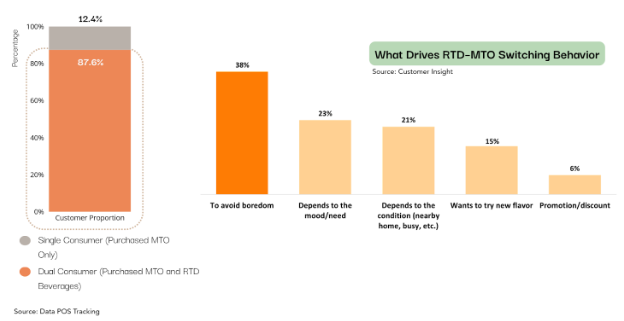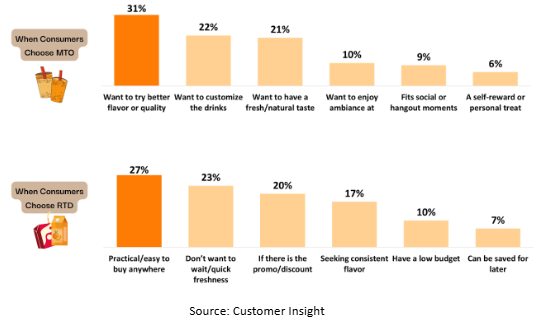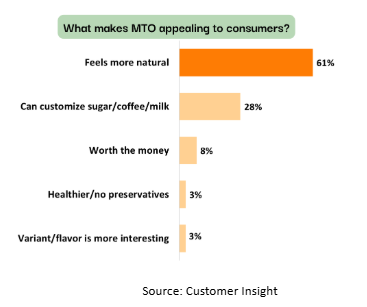The Dual Boom: How Consumers Drive the Growth of MTO Along with RTD

Consumers today are presented with a wide variety of drink options. They are not only looking for something to satisfy their thirst but also seeking a better experience. One option that became popular is made-to-order (MTO) beverages, which are prepared only after consumers place an order, this makes them appealing because these beverages can fit for each consumer's preferences. Meanwhile, there is another drink that has a similar purpose but served in a different way, Ready-to-Drink (RTD) beverages, which are packaged for immediate consumption without any additional preparation
So, is the popularity of MTO showing that people actually prefer these drinks now, or is it more about a shift away from RTD products, or maybe it’s just a sign that people are more open to trying different kinds of drinks?
In this article, we explore consumer behavior toward MTO and its correlation along with RTD. We deep dive whether they choose one of them or consume both as well as the reason behind its choice.This study combines insights from a survey of 100 respondents and POS transaction tracking data.
Based on transaction data, sales MTO’s Beverages have shown significant growth this year, increasing by 57.8% compared to LY. This growth is accompanied by consumer growth that increases 62.8%. It became the main factor behind the increase of MTO’s sales.

If we look at MTO’s consumer behavior toward RTD consumption, 87.6% of MTO's consumers are categorized as Dual Consumer, which means they purchased both MTO and RTD.
They consume both MTO and RTD to avoid boredom, influenced by the mood and situation.

Their beverage choices are not exclusive, but complementary, driven by needs, occasion, and the need to keep experiences fresh. Consumers choose MTO when they want to try better quality, customize the drinks, and have a natural taste. If they want practicality and quick freshness, they will choose RTD.

When we look at dual consumers, whether they were dual consumers in the previous period or started to be dual in this period, we find that around 74% consumers started to be dual consumers in this period, while the others have already been dual consumers among RTD and MTO since the previous period.
If we look further, around 60% of new dual consumers, those who became dual consumers in this period, previously purchased RTD Beverages only and now they start to try MTO beverages.

A new dual that previously only consumed RTD started to try MTO because it feels more natural. The perception of “more natural” reflects a shift toward products that appear less processed, freshly prepared, and closer to their original ingredients.

If we look closely at consumers who have already been dual consumers since the previous period regarding their purchase allocation, they started to increase their spending on MTO and reduce their spending on RTD compared with previous period. They think that MTO can be customized so that they can control their sugar and make it more healthier. Besides, freshers still become the main reasons why they decrease their spending on RTD and increase their spending on MTO.

The behavior of MTO’s consumers reflects a broader desire for variety and novelty between MTO and RTD. While MTO offers freshness and customization, RTD provides convenience and quick access. Alternating between the two helps consumers balance excitement vs. practicality.
Their mood (refreshing treat vs. convenience) and their context (time, setting, activity) shape which option they pick. This shows that the two formats serve different emotional and functional needs, making them complementary rather than competing.
We hope these insights and data are beneficial for you. If you want to know more about your product’s performance, we can help. With over 22 million members and millions of daily transactions, we provide in-depth analysis of customer behavior and product performance to support your business decisions.












